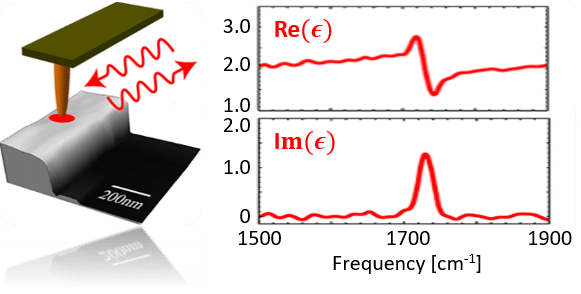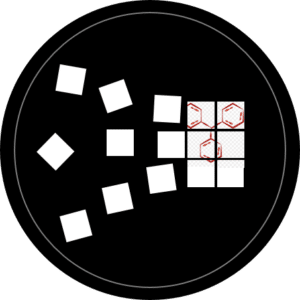Synchrotron Infrared Nano Spectroscopy (SINS) combines ultra-broadband IR radiation from synchrotron with the nanoscale spatial resolution of nano-FTIR spectroscopy developed and patented by neaspec. neaspec SINS enables ultra-broadband IR spectroscopy and hyperspectral imaging with nanoscale spatial resolution covering near-IR to far-IR regions in a single shot, providing a unique tool for synchrotron users.
Basic working principle:
- accurately focus synchrotron IR beam onto a sharp metallic AFM tip;
- illuminated tip creates a strong nano-focus at its apex;
- nano-focus acts as a ultra-small nanoscale “white light” source that probes sample’s spectral properties through near-field optical interaction;
- near-field interaction modifies the tip-scattering which is detected using asymmetric FTIR, delivering local ultra-broadband absorption and reflectivity spectra with spatial resolution determined only by the tip apex radius (typically 20 nm).
Challenge: Synchrotron radiation provides relatively low spectral power density (compared to tabletop laser sources). The tip scatters only a small portion of this power, therefore successful detection of near-field signal and its filtering from scattering background depends critically on the performance of the detection technology, quality of optical components and focusing expertise.
neaspec offers a combination of unique patented nano-FTIR detection technology optimized for synchrotron IR beamlines, patented aberration-free focusing elements, highest-quality components and the market leading expertise in near-field optics & light source integration. This is why neaspec’s nano-FTIR is the only nanoscale absorption spectroscopy technique successfully utilized at synchrotrons around the World.
SINS is based on the nano-FTIR setup comprising an asymmetric interferometer where the AFM tip and the sample are located in one of the interferometer arms. Beam from synchrotron IR beamline is coupled to nano-FTIR and provides an ultra-broadband illumination source, that illuminates the AFM tip. Tip-scattered light is then recombined with the reference beam at the detector. The detector signal is recorded as a function of reference mirror position, creating an (asymmetric) interferogram. Fourier transformation of this interferogram returns local ultra-broadband amplitude and phase spectra. These spectra relate to the sample reflectivity and absorption, providing ultra-broadband spectroscopic sample analysis with nanoscale spatial resolution.
Compare different s-SNOM technologies and learn why neaspec is the market leader.






















